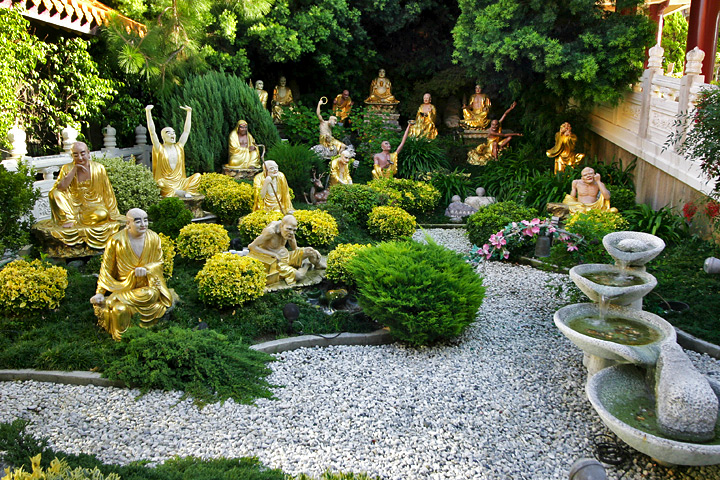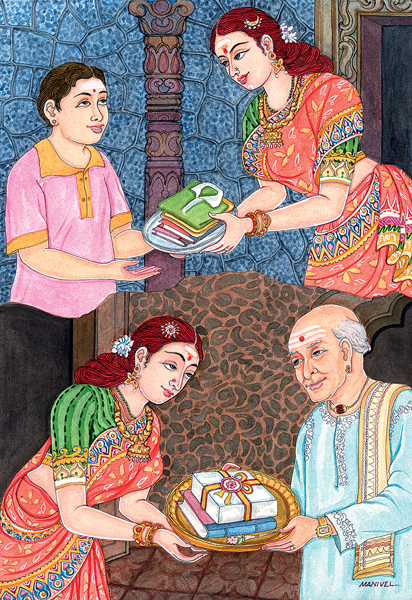|
Sīvali
Sīvali (; ; ; ; ) is an arhat widely venerated among Theravada Buddhists. He is the patron saint of travel and is believed to ward off misfortunes at home such as fire or theft. His veneration predates the introduction of Theravada Buddhism into Burma. Sīvali is typically depicted standing upright and carrying a walking staff, an alms bowl and Buddhist prayer beads. Born to Queen Suppavasa, Sīvali is believed to have remained in his mother's womb for seven years because of past karma. After a week in labor, Sīvali's mother gave birth to a precocious boy who could immediately speak. Thereafter, Gautama Buddha's chief disciple, Sariputta, admitted Sīvali into the sangha. The Burmese believe that worshiping him will bring them prosperity and good fortune. See also *Arahant * Upagupta * Shin Upagutta *Ari Buddhism Ari Buddhism or the Ari Gaing (, ) is the name given to the religious practice common in Burma prior to Anawrahta's rise and the subsequent conversion of Bagan ... [...More Info...] [...Related Items...] OR: [Wikipedia] [Google] [Baidu] |
Phra Sivali Thera พระสิวลีเถระ Wat Ratcha Singkhon วัดราชสิงขร - CROPPED
{{Disambiguation ...
Phra () is a Thai term that may refer to: *''Phra'', a Thai-language term for Buddhist monk *''Phra'', a Thai-language term for priest *''Phra'', a Thai-language word used as a prefix denoting holy or royal status, including in Thai royal ranks and titles *''Phra'', a Thai noble title Other uses * Francesco "Phra" Barbaglia, Italian DJ and producer; see Crookers Crookers is the musical project of Italian DJ and producer Francesco "Phra" Barbaglia. Crookers was originally a duo consisting of Phra and fellow producer Bot, who worked together from 2003 to 2012. When the two artists met, both were trying to ... [...More Info...] [...Related Items...] OR: [Wikipedia] [Google] [Baidu] |
Arhat
In Buddhism, an ''Arhat'' () or ''Arahant'' (, 𑀅𑀭𑀳𑀦𑁆𑀢𑁆) is one who has gained insight into the true nature of existence and has achieved ''Nirvana (Buddhism), Nirvana'' and has been liberated from the Rebirth (Buddhism), endless cycle of rebirth. The understanding of the concept has changed over the centuries, and varies between different schools of Buddhism and different regions. A range of views on the attainment of arhats existed in the early Buddhist schools. The Sarvastivada, Sarvāstivāda, Kāśyapīya, Mahāsāṃghika, Ekavyāvahārika, Lokottaravāda, Bahuśrutīya, Prajñaptivāda, and Caitika schools all regarded arhats as imperfect in their attainments compared to buddhahood, buddhas.Sree Padma. Barber, Anthony W. ''Buddhism in the Krishna River Valley of Andhra''. 2008. p. 44Warder, A.K. ''Indian Buddhism''. 2000. p. 277 Mahayana Buddhist teachings urge followers to take up the path of a bodhisattva, and to not fall back to the level of ... [...More Info...] [...Related Items...] OR: [Wikipedia] [Google] [Baidu] |
Theravada
''Theravāda'' (; 'School of the Elders'; ) is Buddhism's oldest existing school. The school's adherents, termed ''Theravādins'' (anglicized from Pali ''theravādī''), have preserved their version of the Buddha's teaching or ''Dharma (Buddhism), Dhamma'' in the Pāli Canon for over two millennia. The Pāli Canon is the most complete Buddhist canon surviving in a Indo-Aryan languages, classical Indian language, Pāli, which serves as the school's sacred language and ''lingua franca''.Crosby, Kate (2013), ''Theravada Buddhism: Continuity, Diversity, and Identity'', p. 2. In contrast to Mahāyāna and Vajrayāna, Theravāda tends to be conservative in matters of doctrine (''pariyatti'') and monastic discipline (''vinaya''). One element of this Religious conservatism, conservatism is the fact that Theravāda rejects the authenticity of the Mahayana sutras (which appeared onwards). Consequently, Theravāda generally does not recognize the existence of many Buddhas and bodhisattva ... [...More Info...] [...Related Items...] OR: [Wikipedia] [Google] [Baidu] |
Buddhist Prayer Beads
A japamala, , or simply Japay mala (; , meaning 'garland') is a loop of prayer beads commonly used in Indian religions such as Hinduism, Buddhism, Jainism and Sikhism. It is used for counting recitations (''japa'') of mantras, prayers or other sacred phrases. It is also worn to ward off evil, to count repetitions within some other form of '' sadhana'' (spiritual practice) such as prostrations before a holy icon. They are also used as symbols of religious identification. The main body of a mala usually consists of 108 beads of roughly the same size and material as each other, although smaller versions, often factors of 108 such as 54 or 27, exist. A distinctive 109th "guru bead" or mother bead, which is not counted, is very common. Mala beads have traditionally been made of a variety of materials such as wood, stone, gems, seeds, bone and precious metals—with various religions often favouring certain materials—and strung with natural fibres such as cotton, silk, or animal h ... [...More Info...] [...Related Items...] OR: [Wikipedia] [Google] [Baidu] |
Karma
Karma (, from , ; ) is an ancient Indian concept that refers to an action, work, or deed, and its effect or consequences. In Indian religions, the term more specifically refers to a principle of cause and effect, often descriptively called the principle of karma, wherein individuals' intent and actions (cause) influence their future (effect): Good intent and good deeds contribute to good karma and happier Reincarnation, rebirths, while bad intent and bad deeds contribute to bad karma and worse rebirths. In some scriptures, however, there is no link between rebirth and karma. In Hinduism, karma is traditionally classified into four types: Sanchita karma (accumulated karma from past actions across lifetimes), Prārabdha karma (a portion of Sanchita karma that is currently bearing fruit and determines the circumstances of the present life), Āgāmi karma (future karma generated by present actions), and Kriyamāṇa karma (immediate karma created by current actions, which may y ... [...More Info...] [...Related Items...] OR: [Wikipedia] [Google] [Baidu] |
Sangha
Sangha or saṃgha () is a term meaning "association", "assembly", "company" or "community". In a political context, it was historically used to denote a governing assembly in a republic or a kingdom, and for a long time, it has been used by religious associations, including Buddhists, Jains and Sikhs. Given this history, some Buddhists have stated that the tradition of the ''sangha'' represents humanity's oldest surviving democratic institution. In Buddhism, ''sangha'' refers to the monastic communities of ''bhikkhu'' (monks) and '' bhikkhuni'' (nuns). These communities are traditionally referred to as the ''bhikkhu-sangha'' or the ''bhikkhuni-sangha''. As a separate category, those Buddhists who have attained any of the four stages of enlightenment, whether or not they are members of the monastic community, are referred to as the ''āryasaṅgha'' ("noble Sangha"). According to the Theravada school and Nichiren Shoshu Buddhism, the term ''sangha'' does not refer to ... [...More Info...] [...Related Items...] OR: [Wikipedia] [Google] [Baidu] |
Arahant
In Buddhism, an ''Arhat'' () or ''Arahant'' (, 𑀅𑀭𑀳𑀦𑁆𑀢𑁆) is one who has gained insight into the true nature of existence and has achieved '' Nirvana'' and has been liberated from the endless cycle of rebirth. The understanding of the concept has changed over the centuries, and varies between different schools of Buddhism and different regions. A range of views on the attainment of arhats existed in the early Buddhist schools. The Sarvāstivāda, Kāśyapīya, Mahāsāṃghika, Ekavyāvahārika, Lokottaravāda, Bahuśrutīya, Prajñaptivāda, and Caitika schools all regarded arhats as imperfect in their attainments compared to buddhas.Sree Padma. Barber, Anthony W. ''Buddhism in the Krishna River Valley of Andhra''. 2008. p. 44Warder, A.K. ''Indian Buddhism''. 2000. p. 277 Mahayana Buddhist teachings urge followers to take up the path of a bodhisattva, and to not fall back to the level of arhats and śrāvakas. The arhats, or at least the sen ... [...More Info...] [...Related Items...] OR: [Wikipedia] [Google] [Baidu] |
Upagupta
Upagupta (c. 3rd Century BC) was a Buddhist monk. According to some stories in the Sanskrit text Ashokavadana, he was the spiritual teacher of the Mauryan emperor Ashoka. In the Sarvāstivādin tradition he is the fifth patriarch after Mahākaśyapa, Ānanda, Madhyāntika, and Śāṇakavāsin, and in the Ch'an tradition he is regarded as the fourth. Upagupta's teacher was Śāṇavāsa, who was a disciple of Ānanda, the Buddha's attendant. Due to the absence of his name in Theravada literature it is assumed that Upagupta was a Sarvāstivādin monk. In South East Asian countries and Bangladesh Upagupta is a great cult figure. In Myanmar he is known as Shin Upagutta. In Cambodia, he is known as Preah Uppakut. In the Lokapannatti Upagupta is sent by Ashoka to tame Mara during an enshrinement ceremony festival, afterwards he asks her to take the physical form ('' rupakaya'') of Buddha so that everyone at the festival can see what Buddha looked like. In literature Rabindrana ... [...More Info...] [...Related Items...] OR: [Wikipedia] [Google] [Baidu] |
Shin Upagutta
Shin Upagutta ( or ; also spelt Shin Upagot, Shin Upagote or Shin U Pagoke) is an arahant commonly venerated by Buddhists in Myanmar. He is believed to protect worshipers from danger, including floods and storms. He is also venerated in Cambodia, Northern Thailand and Laos, where he is known as Upakhut (; ). He is commonly depicted sitting cross-legged, dressed in monk's robes and with a hand tilted into an alms bowl called a thabeik, and is associated with nāga, water serpents. He is believed to be either Moggaliputta-Tissa, a Buddhist monk who presided the Third Buddhist council, Upagupta, a Mahayana arhat, or a creation of Mahayana Buddhism, because he is not described in the Pali Canon and only mentioned in the Burmese historical chronicle '' Maha Yazawin''. Biography Life before becoming an arhat He was a monk named Eindagotta (ဣန္ဒာဂုတ္တ, ) during Kassapa Buddha's time. He told some fellow monks to leave the monk life and to live a human life ... [...More Info...] [...Related Items...] OR: [Wikipedia] [Google] [Baidu] |
Ari Buddhism
Ari Buddhism or the Ari Gaing (, ) is the name given to the religious practice common in Burma prior to Anawrahta's rise and the subsequent conversion of Bagan to Theravada Buddhism in the eleventh century. It was introduced in the 7th century, possibly through trade contact from India or Tibet. History Ari practices have largely been categorized as a tantric form of Buddhism, combining elements of Buddhism, nat worship, indigenous nāga worship and Hinduism. Some scholars claim that it is related to the tradition known as Azhali Buddhism of Nanzhao and the subsequent Dali Kingdom in modern-day Yunnan, China. Other historians like Than Tun contend that the Aris were forest-dwelling monks who simply differed in monastic practice from Theravadin bhikkhus, especially with regard to adherence to the Vinaya, as they were much less orthodox, allowed to consume alcohol, engage in sexual relations, and eat after midday. Despite his conversion to Theravada Buddhism due to the effort ... [...More Info...] [...Related Items...] OR: [Wikipedia] [Google] [Baidu] |
Foremost Disciples Of Gautama Buddha
{{disambig ...
Foremost may refer to: * Foremost (software), a forensic data recovery program *'' Foremost 105'', a British Government tugboat (1945–1947) *'' Foremost 106'', a British Government tugboat (1945–1947) * Foremost, Alberta, a village in Canada * Foremost Airport, in Alberta, Canada * Foremost Formation, a geological formation in Alberta, Canada * Foremost Dairy Products, a southern US company (1929–1931) * Foremost Group, a New York-based shipping company * Foremost, a Canadian equipment company founded by Bruce Nodwell *Foremost Insurance, part of Farmers Insurance Group *Foremost-McKesson, a name previously used by the McKesson Corporation McKesson Corporation is a publicly traded American company that distributes Medication, pharmaceuticals and provides health information technology, Medical device, medical supplies, and Health administration, health management tools. The company ... [...More Info...] [...Related Items...] OR: [Wikipedia] [Google] [Baidu] |




